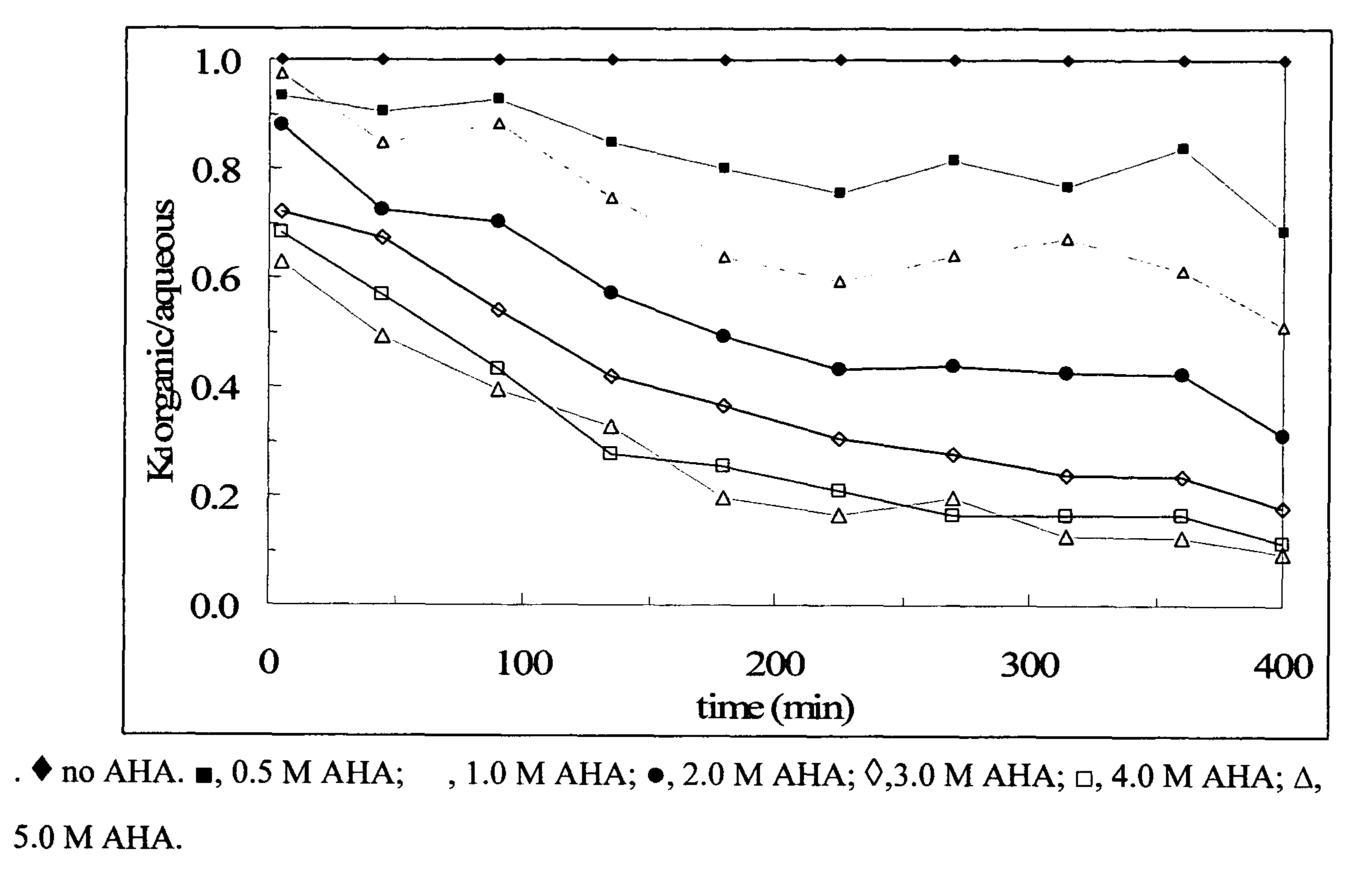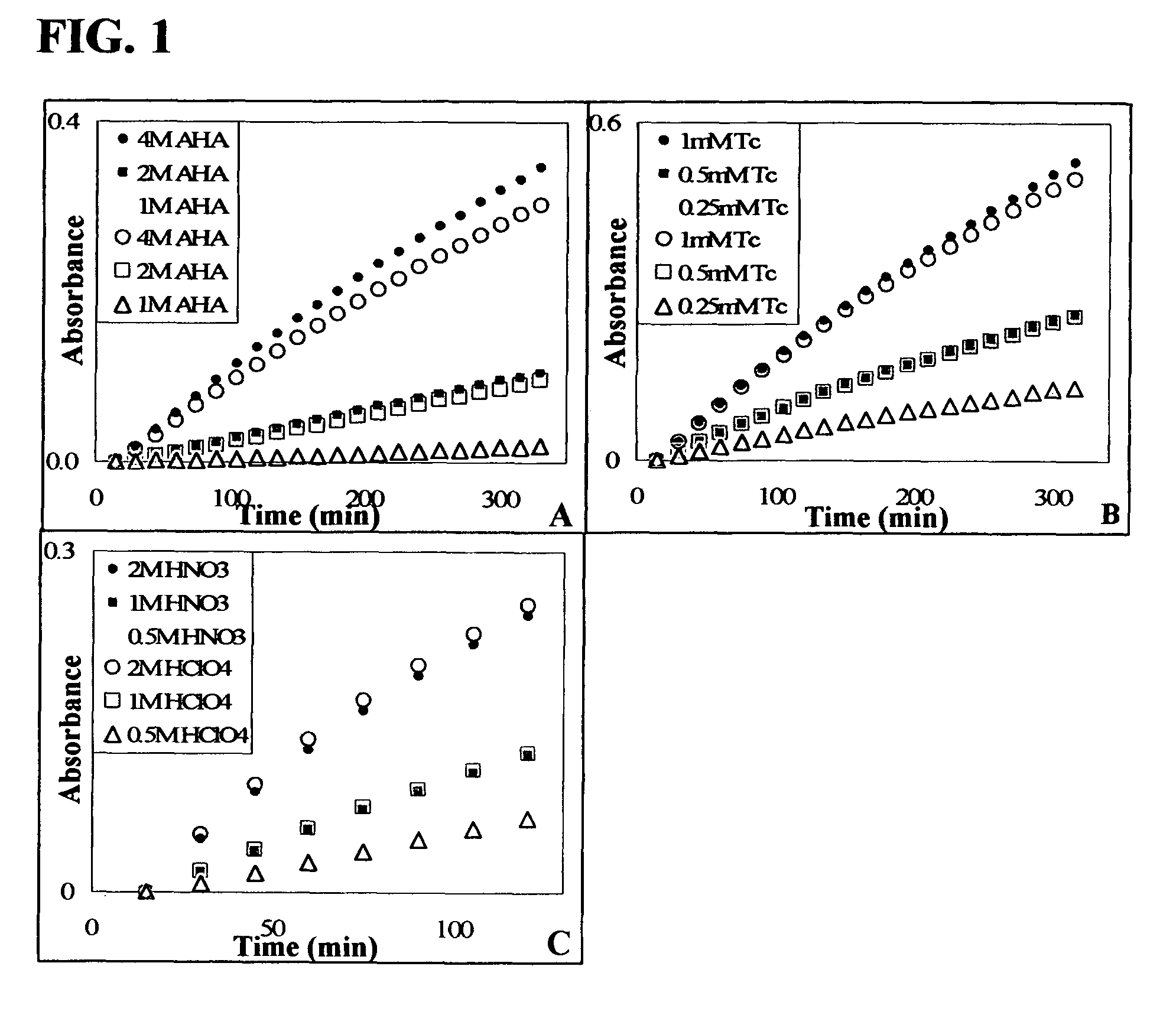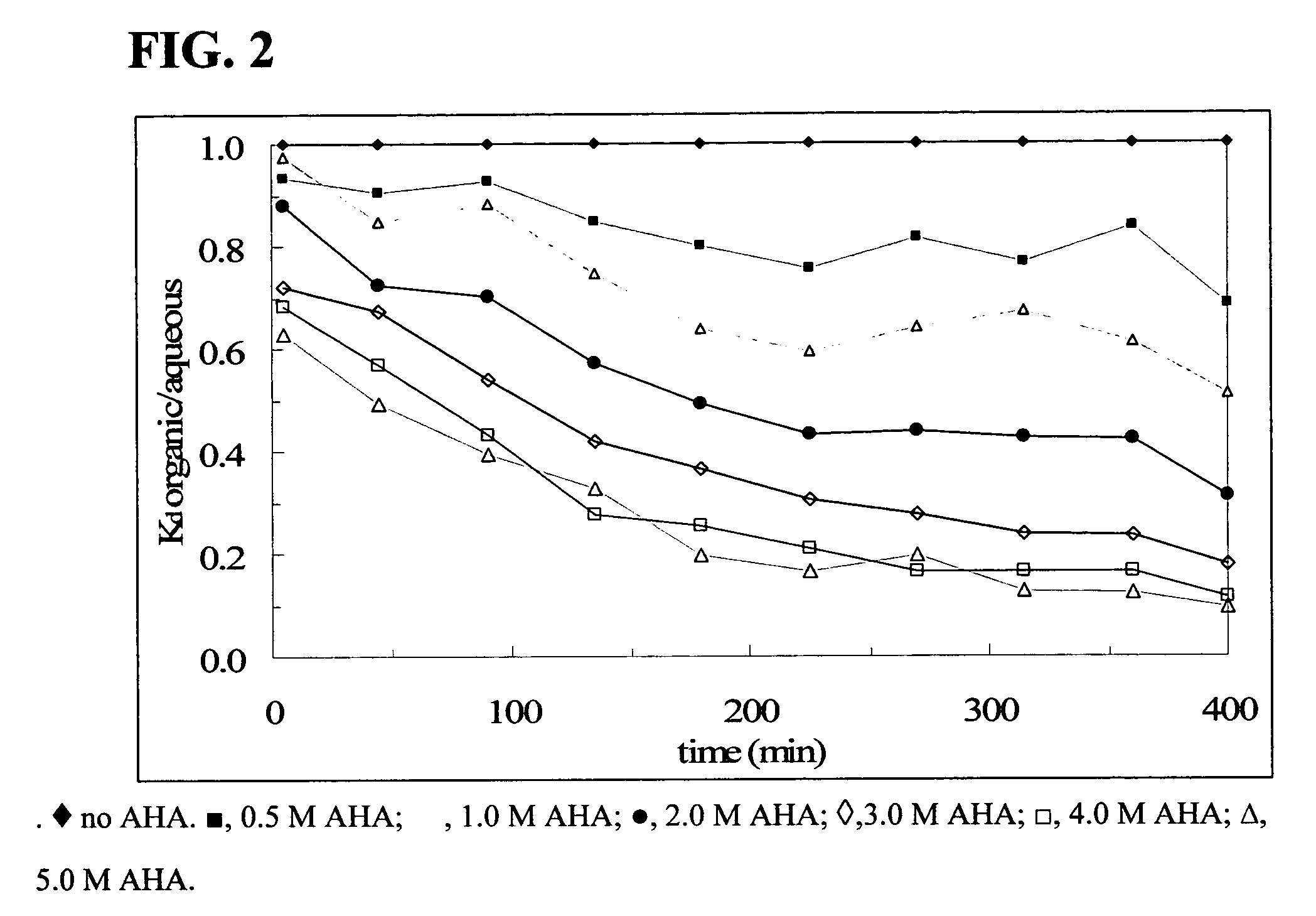Process for the extraction of technetium from uranium
a technology of uranium and technology of uranium, which is applied in the direction of separation processes, nuclear elements, greenhouse gas reduction, etc., can solve the problems of complex purification process, limited waste storage facilities, and resistance to the expansion of existing storage facilities and the building of new storage facilities
- Summary
- Abstract
- Description
- Claims
- Application Information
AI Technical Summary
Benefits of technology
Problems solved by technology
Method used
Image
Examples
Embodiment Construction
[0023]Uranium is extracted from Technetium-contaminated uranium compositions by forming altered valence states of the technetium (especially by reduction) and forming technetium products that are not as readily soluble (or are essentially insoluble) in organic solvents such as those comprising tributylphosphate. A preferred reagent in the alteration of the technetium state is acetohydroxamic acid (AHA, i.e., N-hydroxy-acetamide, or N-acetyl-hydroxylamine). The reaction is preferably performed in an acid environment (preferably an inorganic acid, such as e.g., in mineral acid [nitric—HNO3, hydrochloric—HCl, and perchloric—HClO4].
[0024]In this work, it is demonstrated that pertechnetate undergoes reductive nitrosylation by AHA under a variety of conditions. The resulting divalent technetium is complexed by AHA to form the pseudo-octahedral trans-aquonitrosyl(diacetohydroxamic)-technetium(II) complex ([TcII(NO)(AHA)2H2O]+) (1, Formula 1), as characterized by extended x-ray absorption f...
PUM
| Property | Measurement | Unit |
|---|---|---|
| volume | aaaaa | aaaaa |
| pH | aaaaa | aaaaa |
| pH | aaaaa | aaaaa |
Abstract
Description
Claims
Application Information
 Login to View More
Login to View More - R&D
- Intellectual Property
- Life Sciences
- Materials
- Tech Scout
- Unparalleled Data Quality
- Higher Quality Content
- 60% Fewer Hallucinations
Browse by: Latest US Patents, China's latest patents, Technical Efficacy Thesaurus, Application Domain, Technology Topic, Popular Technical Reports.
© 2025 PatSnap. All rights reserved.Legal|Privacy policy|Modern Slavery Act Transparency Statement|Sitemap|About US| Contact US: help@patsnap.com



